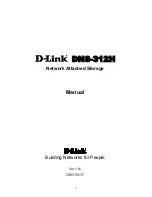
partitions. A reboot is required on the partition containing this device and on the moved
device, but the system itself is
not powered off in order to boot standalone diagnostics
in a logical partitioned system partition.
Considerations for Running Standalone Diagnostics from CD-ROM
Consider the following when you run standalone diagnostics:
v
The diagnostic CD must remain in the CD-ROM drive for the entire time that
diagnostics are running.
v
The diagnostic CD cannot be ejected from the CD-ROM drive after the diagnostics
have loaded. The CD can only be ejected after the system has been turned off and
then turned on (standalone mode) or after the diagnostics program has terminated
(online concurrent mode).
v
The CD-ROM drive from which diagnostics were loaded cannot be tested.
v
The SCSI adapter (or circuitry) controlling the CD-ROM drive from which diagnostics
were loaded cannot be tested.
Loading the Standalone Diagnostics from CD-ROM
To run standalone diagnostics in service mode from CD-ROM, do the following:
1. Stop all programs including the AIX operating system (get help if needed).
2. Remove all tapes, diskettes, and CD-ROMs.
3. Power off the
Eserver
pSeries 670 (refer to Full System Management Tasks in the
Hardware Management Console for pSeries Operations Guide, order number
SA38-0603, for more information on full system partitions).
4. Right-click the mouse and select Open Terminal Window.
5. From the service processor menu on the VTERM, select option 2, System Power
Control Menu.
6. Select option 6. Verify that the state changes to
currently disabled
. Disabling fast
system boot automatically enables slow boot.
7. Select option 98 to exit the system power control menu.
8. Use the HMC to power on the managed server in a full system partition. Select
thePower on Diagnostic Default Boot List (refer to Full System Management
Tasks in the
Hardware Management Console for pSeries Operations Guide, order
number SA38-0603, for more information on full system partitions).
9. Insert the CD-ROM into the CD-ROM drive in the media subsystem in the
Eserver
pSeries 670 (not into the HMC’s CD-ROM drive).
Running Standalone Diagnostics from a Network Installation Management (NIM)
Server
A client system connected to a network with a Network Installation Management (NIM)
server can boot standalone diagnostics from the NIM server if the client-specific settings
on both the NIM server and client are correct.
Notes:
1. All operations to configure the NIM server require root user authority.
Chapter 5. Using the Online and Standalone Diagnostics
79
Summary of Contents for Eserver pSeries 670
Page 1: ...pSeries 670 User s Guide SA38 0614 00 ERserver IBM...
Page 2: ......
Page 3: ...pSeries 670 User s Guide SA38 0614 00 ERserver IBM...
Page 14: ...xii Eserver pSeries 670 User s Guide...
Page 22: ...6 Eserver pSeries 670 User s Guide...
Page 28: ...12 Eserver pSeries 670 User s Guide...
Page 88: ...72 Eserver pSeries 670 User s Guide...
Page 136: ...120 Eserver pSeries 670 User s Guide...
Page 150: ...134 Eserver pSeries 670 User s Guide...
Page 154: ...138 Eserver pSeries 670 User s Guide...
Page 158: ...142 Eserver pSeries 670 User s Guide...
Page 188: ...172 Eserver pSeries 670 User s Guide...
Page 194: ...178 Eserver pSeries 670 User s Guide...
Page 197: ......
















































